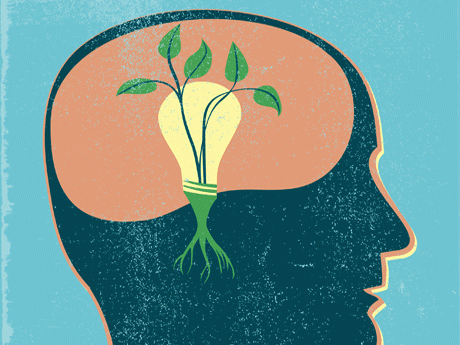From bearded philosophers' musings on consciousness to neuroscientists' papers employing modern techniques to study neurons, I've always been interested in how we have come to understand the brain. With this interest came a curiosity in the strengths and weaknesses each discipline has to offer in terms of solving the ever-evolving puzzle that is the center of our nervous system. If I have learned anything from this curiosity, it is this: if we are going to figure out exactly how the brain works, it is going to take a group effort…
Research increasingly points to the importance of social and emotional learning to student success. Whether students feel connected to school and have a positive sense of themselves as learners strongly influences academic achievement and school completion. Strengthening students’ motivation to learn, it is becoming increasingly clear, is an important complement to the longstanding focus on standards, curriculum, and assessments in school reform….
In response to the question, “How can teachers and sports coaches best work together to support students in achieving academic and athletic success?” Chris, Stephanie and Miray offer the following ideas.
It always starts the same, doesn’t it?
This year, I’m going to workout every day. I’m going to cook more and spend less money on takeout. I’m going to take the time to learn Spanish, lose 15 pounds, read a novel every week, call home on Sundays, train for a half marathon, stop checking work emails after 6pm. Whole 30! Dry January! Quit smoking!
Researchers out of the Wharton School of Business at the University of Pennsylvania suggest that “people are more likely to tackle their goals immediately following salient temporal landmarks,” which makes the start of the new year a perfect time to set new, fresh goals for themselves.
On a whim, I took a Computer Science (CS) course during my first year at UVA and quickly found out that taking a CS class means having to learn an entirely new, and sometimes difficult, skill: coding. So, when I found out that one of my main responsibilities as a research assistant at the Motivate Lab would be coding, I thought it would be a cool opportunity to transfer my CS skills to the social sciences. It was tough for me to imagine though—why would you need to write software to study educational psychology? Turns out it wasn’t exactly the coding I was used to.
Each summer, educators from across the country join Character Lab and Relay GSE to learn about character research from world-class scientists, network with like-minded professionals, and strategize new and innovative ways to infuse character development into their work. Motivate Lab Director, Chris Hulleman, had the opportunity to share some research and best practices for increasing value in the classroom. Check it out here!
Last month, I finally gave up on a much loved, but completely worn-out pair of sneakers and started shopping online for a replacement. A week later, despite reading reviews for at least 15 different shoes and carefully studying a number of sizing charts, I was the proud owner of two poorly-fitting and incredibly uncomfortable pairs of shoes. I had done my research but, in the end, there simply wasn’t a substitute for getting to actually try on the shoes before buying them. But this is not a post about sneakers (obviously). This is a blog about social-psychological interventions.
When former campers look back on their camp experiences, they often reflect on a nostalgic feeling of youthful freedom and exploration. Camp is where many people learned to paddle a canoe, cook over a fire, or conquer their fear of heights. It’s where they got to explore the woods, learn about nature, and how awe inspiring it can be to camp out underneath the stars. But for children, camp has the potential to help children learn to view setbacks as opportunities for growth, and challenges as short-term issues that can be overcome with a little hard work and some ingenuity.
Jaime attended the same undergraduate institution as both of the authors. When Larry Happel wrote about Jaime's story for Central College, Chris Hulleman immediately recognized the psychological factors at play in Jaime's journey. In this article, Hulleman and Happel come together to share Jaime's story and explain what it can teach us about the psychology of navigating life's transitions and challenges.
As a doctoral student teaching statistics to undergraduates, Dr. Chris Hulleman ran into a challenge that all teachers encounter at some point: his students just didn’t seem interested in the topics of the class. Over fifteen years later, Chris and his wife, Teresa, in collaboration with Character Lab, launched a tool designed to help teachers and students overcome barriers to motivation that can be present in the classroom.
Last month, three of Motivate Lab’s research assistants were invited to New York City to present at the January session of the Advanced Academic and Personal Behaviors Institute (AAPBI). This monthly conference is sponsored by the New York City Department of Education and Eskolta, a nonprofit organization that focuses on school-improvement initiatives for urban public schools in the NYC area. Read on to learn about the Motivate Lab students leading the charge on social belonging interventions.
Mary Rose Phillipoom is a second-year University of Virginia student who has been working in the Motivate Lab since the beginning of her first-year. Through Motivate Lab, and her courses at UVA, she’s able to explore her interests in issues of ability, race, and social class in higher education. The Curry School of Education at UVA caught up with Mary Rose to learn a little more about her academic and volunteer interests.
Education Week
Scientific American
FutureEd
Is it possible to increase student motivation by helping (not telling) students to see the importance of the content in their own lives (i.e., increasing utility value)? Motivate Lab Director, Chris Hulleman, and colleagues designed a series of studies based on expectancy-value theory to explore ways a teacher might influence students’ utility value without any time-consuming or expensive curriculum changes.
First-generation college students (students for whom neither parent has a 4-year college degree) earn lower grades and worry more about whether they belong in college, compared with continuing-generation students (who have at least 1 parent with a 4-year college degree). We conducted a longitudinal follow-up of participants from a study in which a values-affirmation intervention improved performance in a biology course for first-generation college students, and found that the treatment effect on grades persisted 3 years later.
We replicated and extended prior research investigating a theoretically-guided intervention based on expectancy-value theory designed to enhance student learning outcomes (e.g., Hulleman & Harackiewicz, 2009). First, we replicated prior work by demonstrating that the utility value intervention, which manipulated whether students made connections between the course material and their lives, increased both interest and performance of low-performing students in a college general education course. Second, we extended prior research by both measuring and manipulating one possible pathway of intervention effects: the frequency with which students make connections between the material and their lives.
There are many promising psychological interventions on the horizon, but there is no clear methodology for preparing them to be scaled up. Drawing on design thinking, the present research formalizes a methodology for redesigning and tailoring initial interventions. We test the methodology using the case of fixed versus growth mindsets during the transition to high school.
Recent research highlights the role of peer victimization in students’ adjustment across a variety of domains (e.g., academic, social), but less often identifies potential mediating variables. In the cur- rent study, we tested for direct effects from peer victimization to adolescents’ academic behavior and alcohol use, as well as indi- rect effects through school belonging.




















